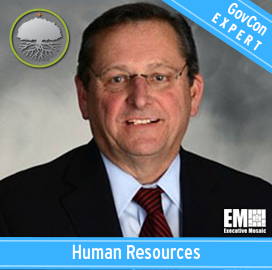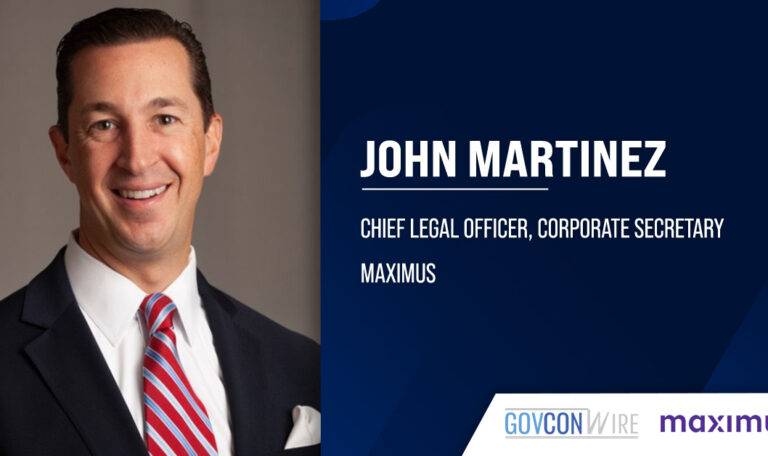In the latest feature from Executive Mosaic’s GovCon Expert program, GovCon Expert Jerry Calhoun, founder and CEO of Silver Tree LLC, explores the role that human resources plays in mergers and acquisitions in the federal market, how it adds value to communication, integration and more.
If you want to share your voice across our unmatched publications and other social media products, click here to become a GovCon Expert
HR in the Corporate Transaction Lifecycle
During a merger or acquisition, the focus is on bringing together separate companies, the human resources (HR) function is a key area of investment and focus during merger, acquisition and divestiture (M&A) activities.
When a divestiture occurs, the focus shifts to creating an environment conducive to carving out a portion of the business to either stand on its own, or integrate into a different organization.
Regardless of the scenario, the HR function is a conduit to the workforce and should be considered a strategic stakeholder that is leveraged during the planning and execution of integration or separation activities. Below are three specific areas where HR is in a unique position to add value:
- Communication
An organization engaged in M&A activity must communicate clearly and in a timely manner with the workforce. Whether pre-announce, post announce, post contract or day one, the workforce has questions and concerns that need to be addressed.
Retention is a key concern whether on the buy-side or sell-side of a transaction. There is a direct correlation between workforce communication and workforce retention.
HR can assist can drive crafting and delivering of messages targeted to the workforce at the appropriate points in time. The objective is to keep the workforce informed as to what is happening, when it is occurring and explain the impact to individual employees.
- Achieving Synergy Targets
Simply put, synergy targets are savings or efficiency opportunities. During M&A activity, it is common to have synergy targets applied across different areas of the business. Whether entities are integrating or separating, the focus is on optimizing synergy opportunities. Some of the common methods to achieve synergies may include headcount optimization and HR technology rationalization.
When HR is the focus of a synergy opportunity, we are tasked to utilize technology and optimized business processes to care for the workforce in the most efficient manner possible.
HR organizations consider their HR and payroll systems, process automation, shared service models and employee/manager self-service to maintain continuity and reduce the resources required to deliver services.
When the focus of the synergy target is outside of the HR organization, HR must take a leading role to drive the identification of synergy opportunities and assist with the implementation of operating and resourcing models that complement the area of the business that is being supported.
- Technical and Functional Integration
Integration, in a transaction setting, refers to the joining of two or more previously separate entities. Integration can occur during a merger, acquisition or divestiture. Depending on the specifics of the transaction, one entity may be absorbed into the operating environment of another, or a new operating environment may be created from organizations merging.
Integrations have technical and functional elements. Technical integration activities may include the IT infrastructure required to conduct business. This often involves more than network infrastructure and includes collaboration tools, desktop software suites as well as business line and workforce applications such as finance, HR and payroll.
Functional integration activities focus on the workforce, culture and desired operating model to achieve business objectives. HR can must drive both the technical and functional integration activities. HR, and often finance, are critical stakeholders in the selection of the HR software and managed services required to care for and compensate the workforce.
These elements are also required to communicate with the financial system of record as well as any other downstream system requiring workforce data. During functional integration activities, human resources can play a prominent role in establishing the culture of the organization, equipping and upskilling the people managers and serving as an agent of change during the integration.
Prior to founding Silver Tree Consulting, I was the senior HR executive during a significant number of mergers and acquisitions as well as the ensuing integrations both of private equity held firms and publicly traded companies.
As such I have been seeking a unique firm that can partner with HR organizations to achieve optimal outcomes during the merger & acquisition process through a successful integration. My experience is that such a firm must not only be highly effective and efficient but it must be exceptionally cost effective since synergies are critical to the success of these transactions.
This effort has led me to Sability, which is a Human Capital Management consulting firm focused on system implementation and HR operations. Steve Kurtz and Bob Prezioso are directors at Sability who are focused on providing targeted HR technical and functional support to companies engaged in corporate transactions.
Working together, the outcome results in bringing to market a full end to end strategy, services and system implementation offering that spans the lifecycle of deals from pre-announce, post-announce, contract signing, Day 1 go-live and beyond.
This end-to-end turnkey capability creates capacity and allows the business to focus on the financial impact of M&A activity on EBITDA and margin, market synergies, growth areas and business structure.















